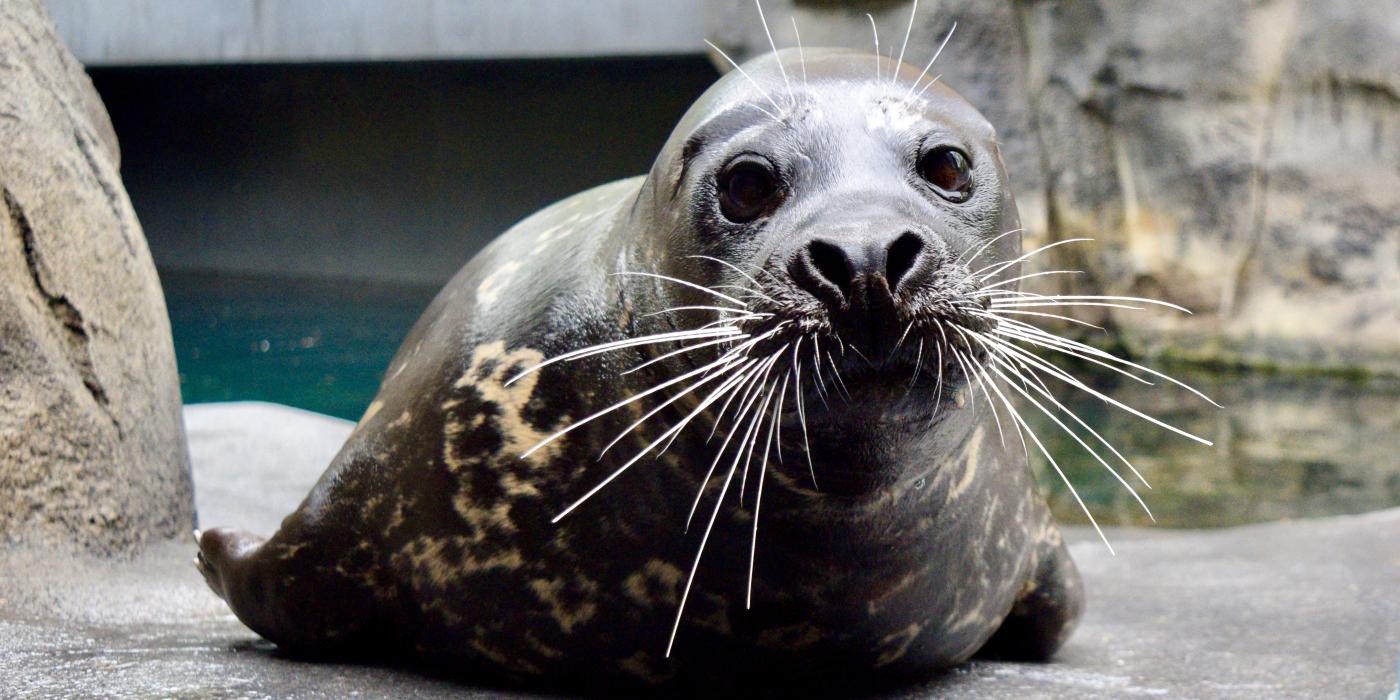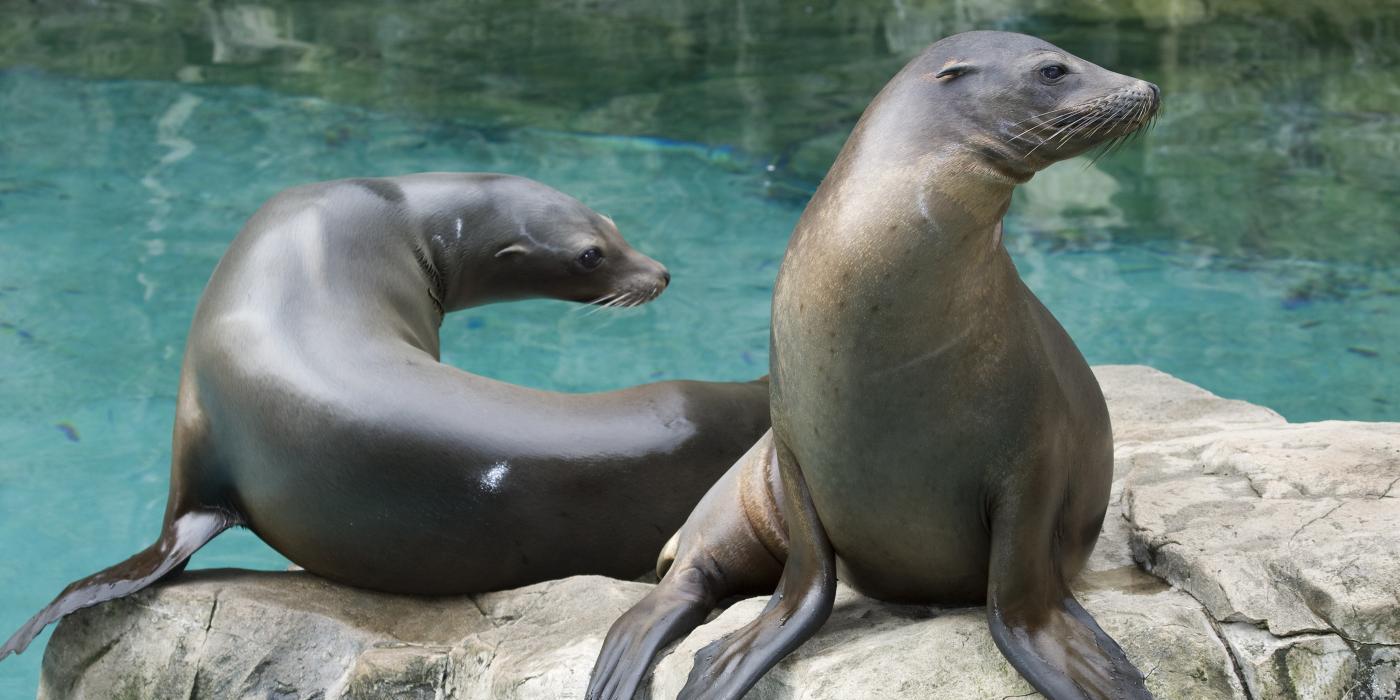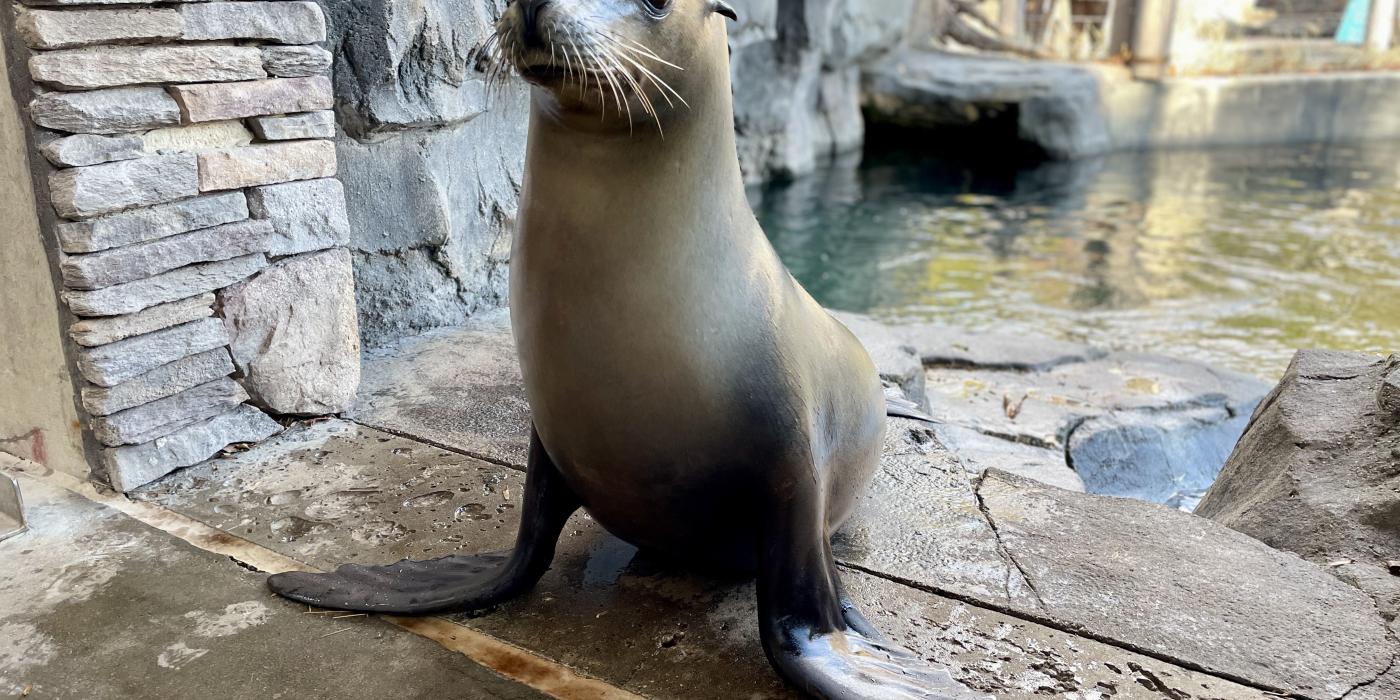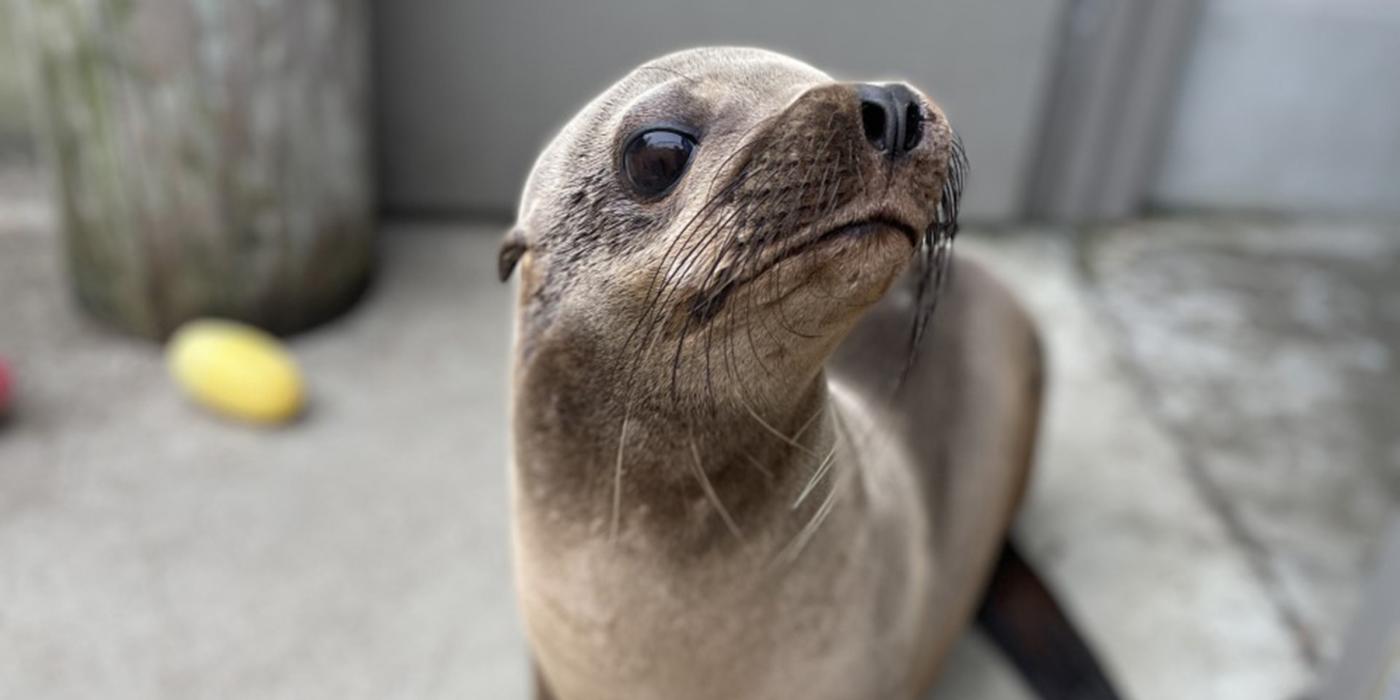Harbor Seal Dies at Smithsonian's National Zoo
We are sad to share that our male harbor seal, Rabbit, died May 13. He was 15 years old; the median life expectancy for wild harbor seals is 8 to 10 years. In zoos, they can live up to 24 years.
Rabbit came to the Smithsonian’s National Zoo and Conservation Biology Institute in 2019 from the OdySea Aquarium in Arizona. Rabbit had known dental issues, and animal care staff closely monitored his teeth. As part of the Zoo’s positive reinforcement training program, keepers trained Rabbit to open his mouth on cue so they could visually inspect and brush his teeth, evaluating for any sensitivities.
In February, keepers noted during routine training that Rabbit’s gingivitis had worsened and his gums bled. He voluntarily participated in radiographs, and Zoo veterinarians discovered an infection around his mandibular incisors. They removed the infected teeth April 27.
Following the procedure, Rabbit showed little interest in food. Keepers presented his diet in multiple ways to encourage him to eat. Despite treatments with pain medications, antibiotics and appetite stimulants, he ate intermittently. On May 13, Rabbit refused his morning diet. Around 11 a.m., keepers went to feed him and, unfortunately, found him deceased. A final pathology report will provide more information in the coming weeks, but the initial necropsy revealed inflammation in his digestive system and chronic ulcers in the lining of his stomach.
Keepers fondly remember Rabbit’s eagerness and dependability during husbandry training sessions. In three years, the determined harbor seal learned more than 20 behaviors! They also enjoyed watching his relationship with our young and dynamic gray seal, Birdie, grow. Rabbit served as a wonderful animal ambassador, teaching staff and visitors alike about the behavior, biology and social nature of harbor seals. Our Zoo family misses him dearly.
Related Species:




